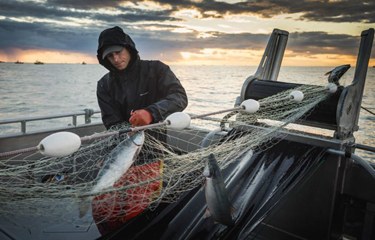Bristol Bay catch lifts sluggish Alaska summer salmon season

Alaska’s summer salmon season drifts into its second half as Bristol Bay’s sockeye fishery is winding down from another strong catch of around 38 million fish, leaving pink salmon to take center stage.
In his weekly report for the Alaska Seafood Marketing Institute, Garrett Evridge said preliminary data from the Alaska Department of Fish and Game put average Bristol Bay sockeye size at just over five pounds, continuing a trend of larger runs of smaller fish in the world’s largest sockeye salmon fishery. Total state-wide catch for sockeye sat at 42 million fish, which was on par with 10-year averages, according to data compiled by Evridge.
Sockeye totals got little help from the Copper River. ADF&G shut the fishery down after fishermen caught just 97,000 sockeye on the 2020 season, far short of the modest preseason forecast of 720,000 sockeye. Copper River chinook were also light, with a harvest of 5,845 out of the forecasted 21,000.
Copper River fisherman Bill Webber, owner of Paradigm Seafoods, said on his blog that the fishery had been open for just seven of their scheduled 21 openers.
“It has been an extremely devastating season this year, leaving the commercial fleet and the local Cordova economy in a very precarious situation in meeting financial obligations,” Webber wrote over the weekend. Webber and other Copper River fishermen hoped to salvage some of their losses on a strong coho salmon harvest in August and September. But coho were also slow early, with a statewide harvest of just 218,000 fish, which Evridge said should closer to one million at this stage of an average year.
While the pink harvest was lagging behind, Evridge said the coming weeks in Southeast and Prince William Sound could easily make up for the sluggish start.
“We’re kind of easing into the few weeks that will define the harvest of pink salmon. It’s been okay in Kodiak and the Alaska Peninsula and low catches in Southeast and Prince William Sound can turn around pretty quickly,” Evridge told SeafoodSource.
And while health officials were celebrating the tail end of Bristol Bay’s season without major community COVID-19 outbreaks in rural Western Alaska, large clusters of coronavirus cases were popping up on bigger ships and at processing facilities.
A processing plant in Anchorage owned by Copper River Seafoods had shuttered for cleaning and disinfecting after 56 workers tested positive for COVID-19, according to reporting by the Anchorage Daily News. Last week, Alaska also saw an outbreak of 85 cases on an American Seafoods trawler and another 96 cases at a processing plant in Seward run by OBI Seafoods. A plant owned by Alaska Glacier Seafoods in Juneau has reported 61 cases since 14 July, according to reporting by KINY Radio. The state reported Monday, 27 July, over 100 new infections, with 36 hospitalizations statewide.
COVID-19 was also taking its toll on prices. Bristol Bay fishermen learned last week they would get a starting base price of USD 0.70 (EUR 0.60), nearly 50 percent off year-on-year prices. According to fishermen in Southeast Alaska, some processors were filling in fish tickets for pink salmon at USD 0.05 (EUR 0.04), a placeholder amount as companies sort out what they might be able to pay fishermen amidst the uncertain market. Despite few pink salmon on the market, rumors on the grounds circulated that ex-vessel prices could be as low as USD 0.25 (EUR 0.21).
“With COVID-19, uncertainly is at an unprecedented high just in regards to selling our product into a global market. And for pink salmon, you have to think about the geopolitical element too; tariffs and trade disputes. The political unrest between the U.S. and China has been trending higher since the season began,” Evridge said.
According to ADF&G, pinks sold at an average ex-vessel price of USD 0.33 (EUR 0.28) in 2019, down from USD 0.48 (EUR 0.41) a year earlier.
Chum salmon – also called keta – lagged far behind recent averages, with the harvest of just four million fish the lowest in at least 12 years for this point in the season.
Evridge said chum run failures in the Arctic-Kuskokwim-Yukon district were particularly devastating to communities there.
“When we're in a situation where we have landings that 80 or 90 percent below previous years, it’s a tough dynamic. Those fish mean a lot to people up there,” Evridge said.
Alaska Public Media reported that Kwik’Pak, the only fish buyer on the Yukon River, shut down operations in mid-July because of a lack of fish.
Photo courtesy of Bristol Bay Regional Seafood Development Association






Share